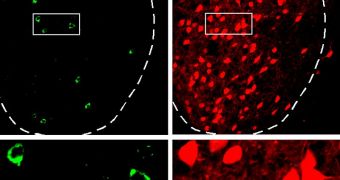A team of experts at the Cold Spring Harbor Laboratory (CSHL) was recently able to identify a never-before-seen neural circuitry in the human brain that plays a role in underlying fear. The circuit connects to an area of the brainstem that controls behavior, and with a site controlling fear memory.
Fear is a natural response to the world around us. This mechanism helps keep us safe from harm. While it may not be that relevant today as opposed to a few thousand years ago, it is still a pretty useful tool to have around. Unfortunately, in some cases, this response can go haywire and cause problems.
Such is the case with post-traumatic stress disorder (PTSD), a condition that causes uncontrollable reactions in the fear center of the brain, anxiety, depression, and other mental health problems. CSHL scientists say that their new discovery could potentially lead to new treatments for PTSD.
The neural circuit the group uncovered is tied directly into the amygdala, a brain structure known to play a role in learning and storing fear-related memories. It is also involved in underlying the innate fight-or-flight response that each of us displays when confronted to danger.
In the new study, investigators led by CSHL associate professor Bo Li were able to clearly identify a group of long-range neurons that project from the central parts of the amygdala all the way to a portion of the brainstem called the midbrain periaqueductal gray (PAG).
The latter plays a critical role in controlling fear response. The team says that this neural circuit may go a long way towards explaining how fear is translated into action in the human body. Details of the work were published in the February 12 issue of the esteemed Journal of Neuroscience.
“This study not only establishes a novel pathway for fear learning, but also identifies neurons that actively participate in fear conditioning. This new pathway can mediate the effect of the central amygdala directly, rather than signaling through other neurons, as traditionally thought,” Li explains.
“We are working to find out how these circuits behave in anxiety disorders, so that we can hopefully learn to control fear in diseases such as PTSD,” the team leader goes on to say. The new study is entitled “Fear conditioning potentiates synaptic transmission onto long-range projection neurons in the lateral subdivision of central amygdala.

 14 DAY TRIAL //
14 DAY TRIAL //